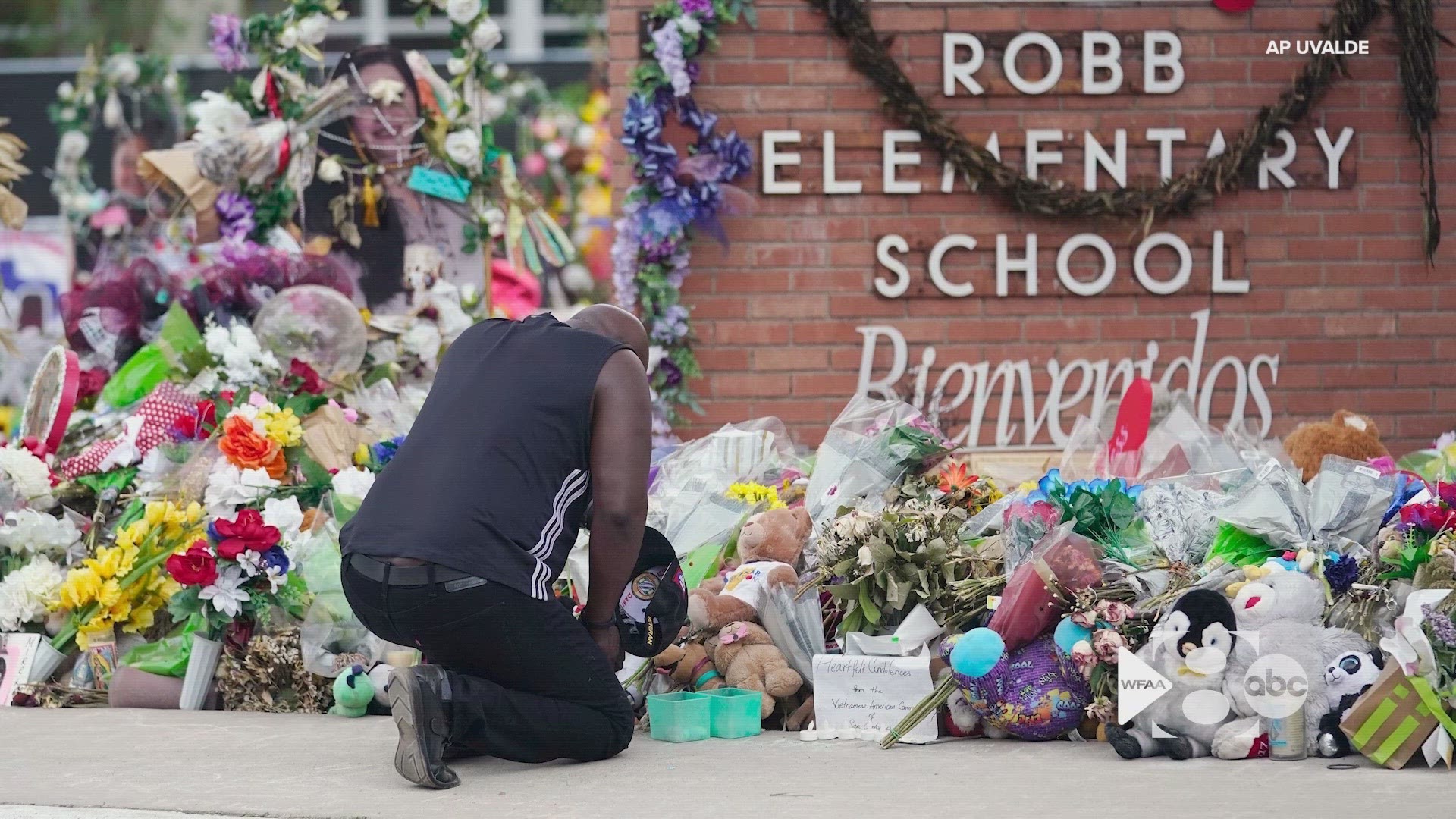DALLAS — Each time it happens, Texas’s top leaders point the finger at one thing: mental illness.
And it’s happened a lot.
In 2017, 26 people were shot and killed in a church in Sutherland Springs.
In 2018, 10 students and teachers died in a mass shooting at Santa Fe High School.
In 2019, 23 people were gunned down inside an El Paso Walmart.
Weeks later, seven people died when a man went on a shooting spree that crossed through Midland and Odessa.
In 2022, 19 children and two teachers were murdered at Robb Elementary in Uvalde – the worst school shooting Texas has ever seen.
In 2023, eight people, including three children, were shot and killed at an outlet mall in Allen.
After the murders in Allen, Gov. Greg Abbott stuck to the same message he’s repeated after every mass shooting during his leadership.
“People want a quick solution,” Abbott told Fox News Sunday in the only interview he's given about the Allen massacre. “The long-term solution here is to address the mental health issue.”
STATISTICS
To say mental health is the root cause of every mass shooting is to oversimplify a complex issue, according to experts.
“There’s no relationship between mental illness as a group and mass shootings at all,” said Andy Keller, president and CEO of Meadows Mental Health Policy Institute.
“That’s a really important thing. Because there’s a huge societal bias that says people with mental illness are violent.”
Keller said if you compare the small group of people who battle severe mental illness - such as debilitating bipolar disorder, psychosis, or severe post traumatic stress disorder - and compare them to the public at large, you’ll find a slight increase in the chances they’ll commit a violent act.
“If we have 100 people in a room who are not seriously mentally ill, two of them will be violent,” Keller said. “And if we have 100 people with serious mental illness in a room, three will be violent.”
When it comes to school shooters, Keller believes they "all have some level of a treatable mental health condition – all of them."
He pointed to a 2021 study by the U.S Secret Service on school violence.
The report from that study found 70 percent of people who plotted school violence "exhibited behaviors indicating the presence of some type of mental health symptom in the time leading up to, or around, the discovery of their plot."
About one in five adults has a mental health condition and one in six children and youth will have a mental health condition, said Greg Hansch, executive director of the National Alliance of Mental Illness’s Texas chapter.
“Mental illness is everywhere. It’s part of the human condition and yet they don’t see the same rates of mass shootings in other continents as we see in the United States of America,” Hansch said.
“I don’t think we can say mental illness is at play in every single one of these mass shootings or school shootings that have happened,” he said. “But we can say that hate is a common thread and radicalism is at play.”
FUNDING
In 2022, Mental Health America ranked every state based on access to mental health care.
Texas came in last.
But things are turning around, both Hansch and Keller said.
An estimated $25 billion has been spent on mental health access under Abbott's watch, according to the Texas Tribune.
“There’s no state that I’m aware of that has made this level of investment,” Keller said. “What the state of Texas did was say we have a problem with children dying from suicide and homicide, so what are the evidence-based things we can do that we know will work.”
In 2019, after the mass shooting at Santa Fe High School the year before, the Texas legislature approved funding for the Texas Child Health Access Through Telemedicine Program, or TCHATT.
It provides school districts with a telemedicine program that can identify and assess students who may need mental health care, and then ensure they then access that care.
By 2020, about 40% of the students in the state had access to the program.
Uvalde did not have access when the shooter who opened fire at Robb Elementary was still enrolled in high school.
TCHATT is now accessible to 60% of students, Keller said, noting that the program has been fully funded and will be available to any school that wants it by the end of 2024.
About $4 million is now being spent on care for people experiencing first episodes of psychosis, like delusions or hallucinations, Hansch said.
The state is also adding psychiatric bed capacity and ramping up mobile crisis outreach teams for suicidal youth and is increasing multi-systemic therapy programs, which Keller calls extremely impactful.
But, Hansch and Keller agree the state isn’t doing enough to address a shortage of manpower.
“Our mental health system is in a state of crisis especially when it comes to workforce,” Hansch said.
Both of their agencies lobbied for large pay raises for community mental health workers this legislative session.
Only small raises were funded.
Part of the more than $155 million that Texas has received from the Bipartisan Safer Communities Act, sponsored by Sen. John Cornyn and passed by Congress one month after Uvalde, is being funneled to universities that are training future mental health service providers.
Funding from Cornyn's act is also being used to expand school-based mental services and institute safety measures or support violence prevention programs on school campuses across North Texas.
IMPACT
Keller said the investment being made in mental health in Texas is impressive, but he acknowledged the impact won’t be felt for a while.
“We just started in 2019 to allocate funds toward this. We just started,” Keller said.
It has to continue.
“Probably by the end of this decade we will be where we need to be,” he said. “These types of huge changes take time.”

